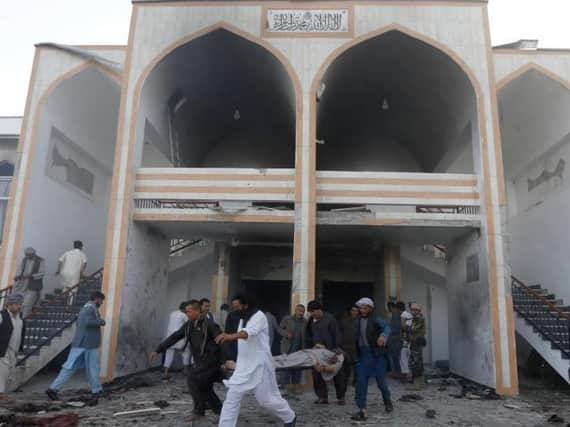9,577 civilians killed by Afghan and international military forces: United Nations estimates


The UN Assistance Mission in Afghanistan (UNAMA) estimates 9,577 ordinary Afghans were killed by national security forces, international military forces and pro-Government armed groups from January 2007 to June 31, 2021.
UNAMA has been preparing regular reports on the protection of civilians during the armed conflict in central Asia for over decade.
Advertisement
Hide AdAdvertisement
Hide AdWhile the Taliban and other elements who waged war against the recently ousted government in Kabul have been responsible for the majority of civilian deaths many hundreds have also died from drone strikes and aerial bombardment.
In its latest mid-year report for 2021 UNAMA reports civilian casualties from Afghan Air Force airstrikes more than doubled this year as they took over from international military drone attacks.
From January to July 2021 pro-Government Forces (PGFs) were responsible for 25 per cent of all civilian casualties with 422 deaths in total, according to UNAMA.
In 2020 841 civilians were killed by PGFs in the country although deaths at the hands of international forces began to decline as the United States moved to withdraw.
Advertisement
Hide AdAdvertisement
Hide Ad"The number of civilian casualties attributed to international military forces decreased significantly, with practically all occurring in the first two months, and almost none for the remainder of the year after the United States and the Taliban reached their agreement on February 29.
"At the same time, 2020 saw the highest number of civilian casualties attributed to the Afghan National Army, including the Afghan Air Force, since UNAMA started systematic documentation of civilian casualties in 2009, mainly because of increased civilian casualties from airstrikes and ground engagements," its annual report for that year states.
In 2018 and 2019, 1,185 and 1,473 civilians died at the hands of PGFs respectively, a large increase from previous years, prompting UNAMA to raise concerns about drone-strikes.
"In 2018, UNAMA documented a significant rise in civilian casualties from aerial operations by PGFs, marking a 61 per cent increase in overall civilian casualties from this tactic type compared to 2017 and an 82 per cent increase in deaths.
Advertisement
Hide AdAdvertisement
Hide Ad"Airstrikes comprised nine per cent of all civilian casualties and caused the highest levels of civilian harm since UNAMA began systematic documentation in 2009.
"UNAMA notes with concern that the increase in civilian casualties from aerial operations in 2018 was largely driven by international military forces’ operations, which caused more civilian casualties than operations by the Afghan Air Force.
"UNAMA is particularly concerned that aerial operations by international military forces conducted in support of Afghan forces, mainly National Directorate of Security (NDS) Special Forces, during search operations, have also caused significantly more civilian casualties (including extremely high numbers of deaths) in 2018," it recorded in its annual report for that year.
PGF-inflicted civilian death estimaes over the past 15 years were as follows: 2007 (629), 2008 (828), 2009 (596), 2010 (440), 2011 (411), 2012 (316), 2013 (146), 2014 (468), 2015 (174), 2016 (903), 2017 (745), 2018 (1,185), 2019 (1,473), 2020 (841) and 2021 (422).
Comment Guidelines
National World encourages reader discussion on our stories. User feedback, insights and back-and-forth exchanges add a rich layer of context to reporting. Please review our Community Guidelines before commenting.